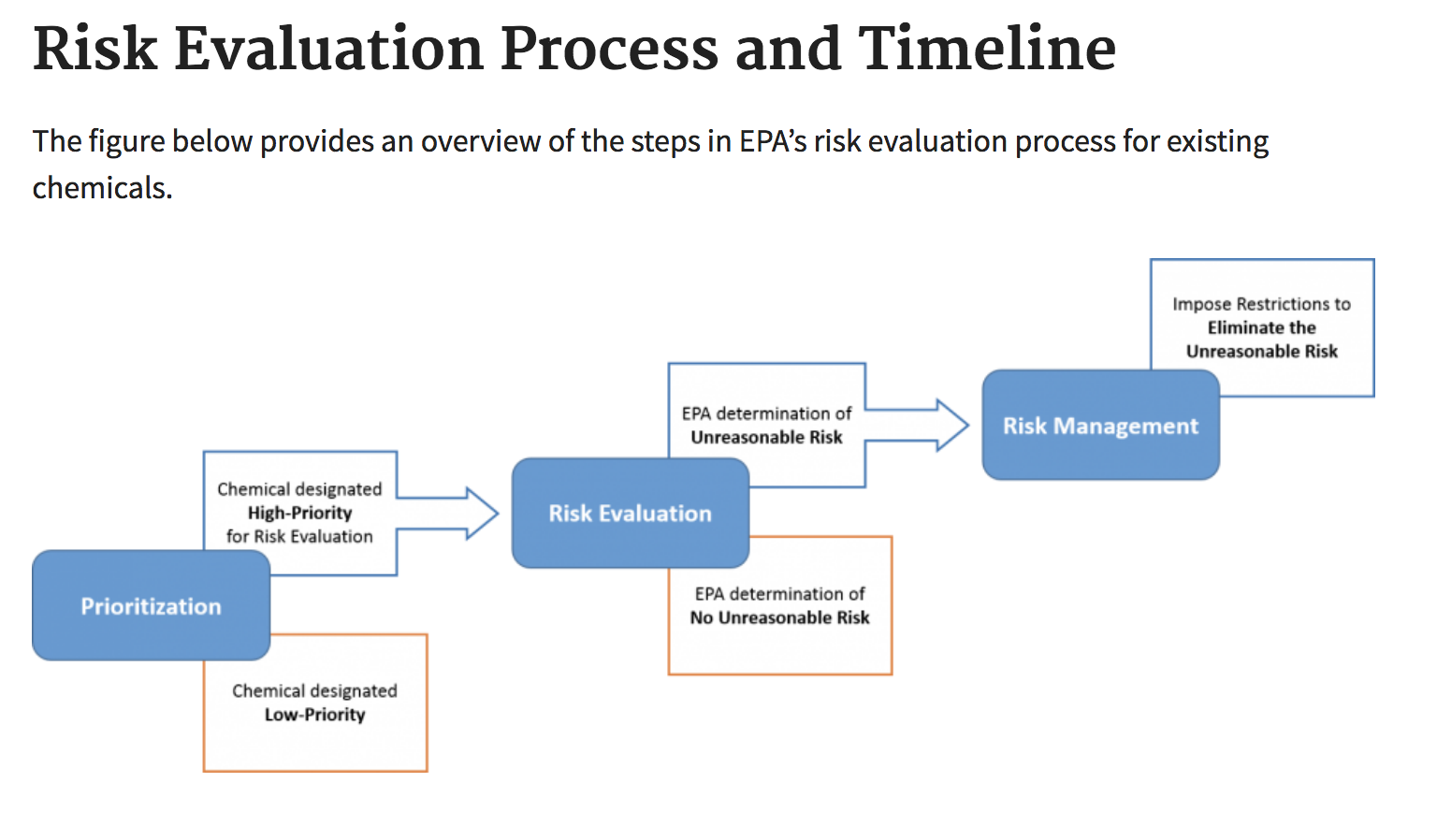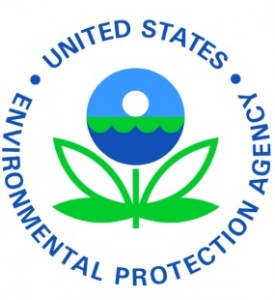Toxic Substances Control Act (TSCA) Reform Landing Page
This page provides an overview of how the EPA conducts risk evaluations for chemicals under the Toxic Substances Control Act (TSCA), as amended by the Frank R. Lautenberg Chemical Safety for the 21st Century Act, the status of EPA’s ongoing risk evaluations and other assessment-related activities and documents.
June 22, 2017 — Scopes of the Risk Evaluations to be Conducted for the First Ten Chemical Substances under the Toxic Substances Control Act; Notice of Availability — Signed by EPA Administrator Scott Pruitt
June 22, 2017 — Procedures for Prioritization of Chemicals for Risk Evaluation Under the Toxic Substances Control Act
June 22, 2017 — Procedures for Chemical Risk Evaluation Under the Amended Toxic Substances Control Act
June 22, 2017 — Scope of the Risk Evaluation for Asbestos
June 1, 2018 — Problem Formulation of the Risk Evaluation for Asbestos
June 1, 2018 — EPA Press Release: “EPA Takes Three Important Steps to Ensure Chemical Safety Under the Lautenberg Act, Proposes Action on Asbestos”
June 1, 2018 — ADAO Press Release: “ADAO Issues a Statement from its President and Co-founder, Linda Reinstein, on the Disappointment of the EPA’s Failure to Recognize Legacy Asbestos as a Deadly Hazard”
On June 1, 2018, the EPA published the problem formulation documents which defines the “scope of the risk evaluations” and doubled down on dangerous. The EPA remains committed to protecting BIG Chem and allowing the raw asbestos importers and users to continue, even though asbestos kills more than 15,000 Americans each year.
The document concerningly excludes ongoing exposures from legacy asbestos products in the environment, and the harmful Libby Amphibole from their risk review. EPA Administrator Scott Pruitt adds to our outrage by stating ‘At the same time, we are moving forward to take important, unprecedented action on asbestos’, referring to a significant new use rule (SNUR) proposal. According to the EPA, the SNUR ‘would require manufacturers and importers to receive EPA approval before starting or resuming manufacturing, and importing or processing of asbestos.’ Yet, the best way to prevent new uses is to have a complete ban of asbestos in the U.S.
Asbestos in the News: Newsweek: Donald Trump Called Asbestos Poisoning a Mob-Led Conspiracy, Now His EPA Won’t Evaluate Asbestos Already in Homes http://bit.ly/2xQ6AmX
It’s unfathomable to read that the EPA states,” In the case of asbestos; legacy uses, associated disposals, and legacy disposals will be excluded from the problem formulation and risk evaluation, as they were in the Scoping document. These include asbestos containing materials that remain in older buildings or are part of older products but for which manufacture, processing and distribution in commerce are not currently intended, known or reasonably foreseen. EPA is excluding these activities because EPA generally interprets the mandates under section TSCA § 6(a)-(b) to conduct risk evaluations and any corresponding risk management to focus on uses for which manufacture, processing or distribution is intended, known to be occurring, or reasonably Page 9 of 80 foreseen, rather than reaching back to evaluate the risks associated with legacy uses, associated disposal, and legacy disposal, and interprets the definition of conditions of use in that context.”
Per TSCA, “The Risk Evaluation process is the second step, following Prioritization and before Risk Management, in EPA’s existing chemical process under TSCA. The purpose of risk evaluation is to determine whether a chemical substance presents an unreasonable risk to health or the environment, under the conditions of use, including an unreasonable risk to a relevant potentially exposed or susceptible subpopulation. As part of this process, EPA must evaluate both hazard and exposure, exclude consideration of costs or other non-risk factors, use scientific information and approaches in a manner that is consistent with the requirements in TSCA for the best available science, and ensure decisions are based on the weight-of-scientific-evidence.”

Linda Reinstein
Social Networks

